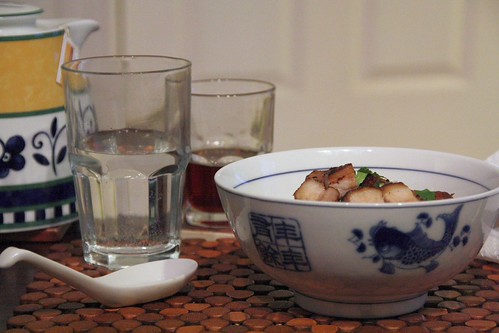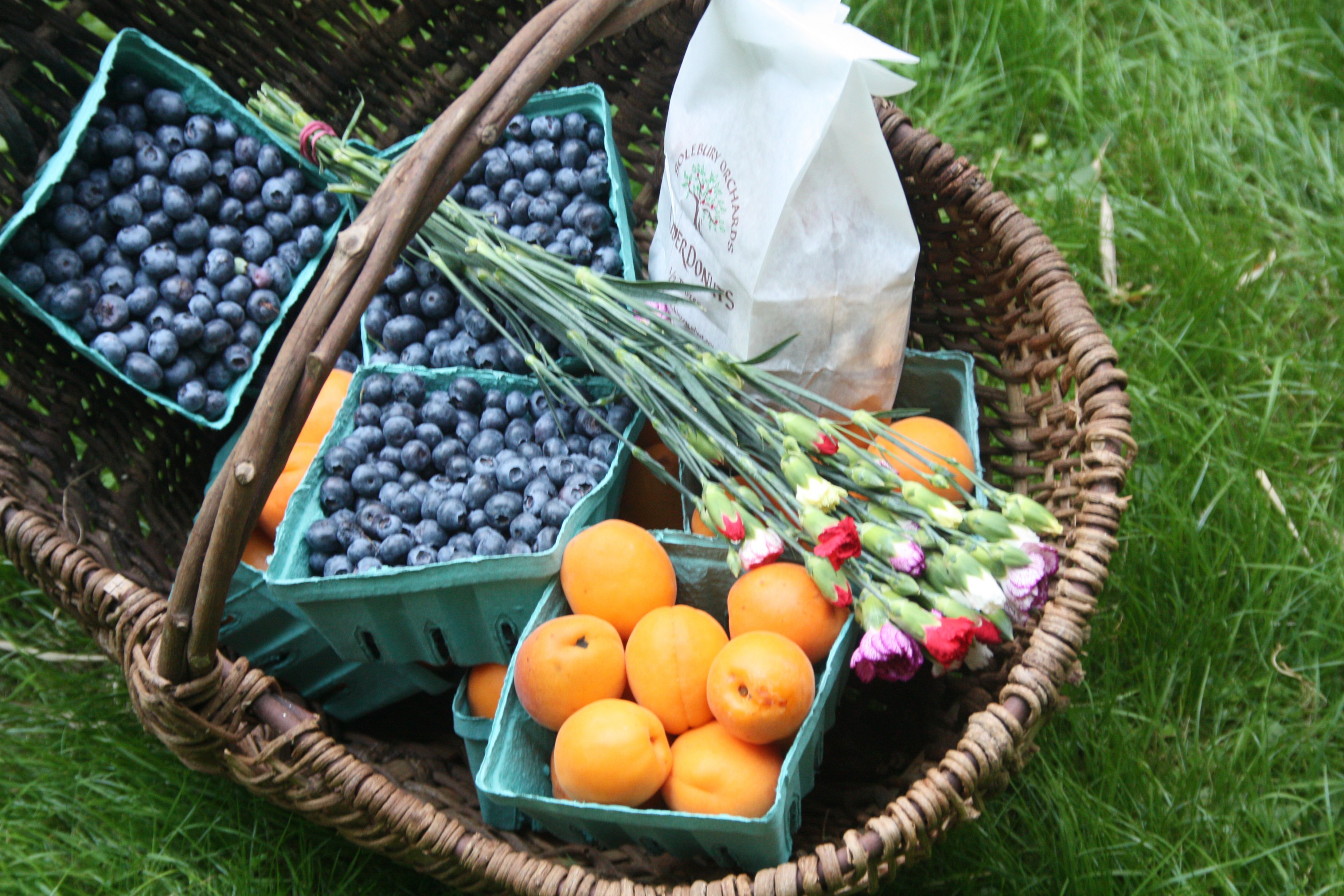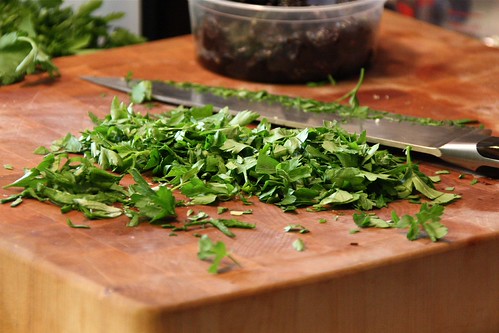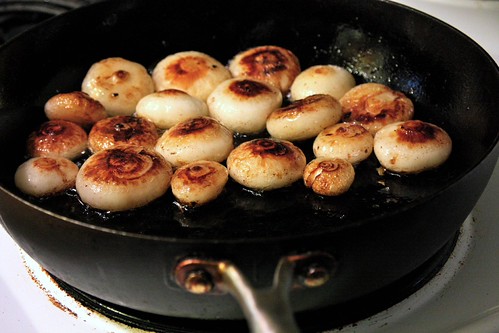There are two things in the kitchen that I take too very seriously. First, there’s spaghetti carbonara — made with guanciale, always, copious black pepper, real parmigiano-reggianno cheese, and never, ever a sauce made from cooked eggs. The carbonara is prepared — sans egg — then put in the “carbonara bowl.” You add the eggs and stir them in, without scrambling, just cooking them ever-so-slightly. It won’t resemble a cream sauce. It will be silky beyond measure. There’s just no other way.

Second, there’s pork belly. I’m not as fanatical about pork belly as I am about carbonara. I don’t subscribe to totalitarian directions. A good pork belly braise, to me, is the opposite of strict. Feeling my way through the recipe, I prepare pork belly in the little of this, little of that method, thinking about the elements of flavor, adding pinches, sniffing, and dipping my finger in the braising liquid to get a good taste.

I’ve never had great luck following pork belly recipes, probably because the pork belly itself is such an important factor. Too much fat and you better be careful to sear and render it enough. Too little fat and the whole thing may turn dry as a bone. For an Asian-style braise, you’ll need to add a bit more of those “kick” ingredients — vinegar, orange — to work with an overly fatty belly. If there’s not enough fat, you’ll want to save a lot of the dripping in the pan after you’ve seared the belly. Or you could just find a belly with equal amounts fat and meat, and then you’ll be fine, indeed.

Usually I serve pork belly over plain white rice, but this time I made a cabbage too. Spicy, of course. I sliced the cabbage thin and put it in a braising pot with some duck fat (my go-to fat for cabbage braising) and brown rice-wine vinegar, adding a few hits of sriracha once it was nice and tender. The result was just as sexy and handsome as that boiled kale I professed love for this winter, but a bit more, ahem, bow-chicka-wowow.

Which was a good thing, because pork belly usually needs some heat. The belly was seared to hell, then braised with a bunch of scallion tops, shavings from half an orange, star anise, dark soy sauce, and chicken stock. I let it bubble away for a few hours, before slicing it into little squares along the crosshatch. Squares that I served atop the cabbage and covered in scallion slices and cilantro sprigs, and a few dashes of soy sauce. People, they were perfect bites.


The weather may be too hot this weekend for a pork belly braise now (80 degrees in NJ lately). Unless, of course, you’re too very serious about your pork belly…

Pork Belly Braise with Red Cabbage
For the pork belly:
1 piece of pork belly, about 1 pound, with about 50 percent fat and 50 perfect meat, scored
1 tablespoon vegetable oil
2 tablespoons dark brown sugar
1 bunch of scallions, green parts only, coarsely chopped (reserve the white part of the scallions for garnish)
2 whole star anise
2-inch piece of ginger, peeled and thickly sliced
peel from 1/2 orange
3 tablespoons dark soy sauce
1/4 cup Shaoxing wine
water to almost cover
For the cabbage:
1 small to medium head of red cabbage
2 teaspoons duck fat
1 cup Shao-Xing rice wine
1 cup water
sriracha
salt, pepper
In a dutch oven that fits the pork belly snugly, melt sugar into oil over medium-high heat for a few minutes, until sugar turns a deep brown color. Put the scored pork belly in the pot, fat side down, and brown on all sides, caramelizing, about 20 minutes. Transfer the pork belly to a plate.
Take some of the drippings out of the pan, or leave it all in, depending on how much has accumulated, and then add the scallion greens, ginger, star anise, and orange into the pot. Cook for a few minutes and then add the wine and soy sauce. Fill the pot up with enough water to come up the sides and almost completely cover the pork belly. Cover the pot and cook over low heat, so that the broth is just simmering, for about 2 hours. Uncover the pot and cook for another hour or hour and a half. Remove the pork belly and cut into squares, following the scoring marks. Strain the broth through a fine-mesh sieve and discard solids. You can boil the broth if it’s too thin, otherwise serve it as is.
Meanwhile, prepare the cabbage. Slice cabbage as thinly as you can. Add duck fat to a large pot over medium heat. Add cabbage and cook for a few minutes. Add wine and water and cook until the cabbage is completely tender, about 1 hour. Add sriracha, starting with a few drops, then adding more until it is as hot as you like it (a little hotter, even, since it’s going to be mixed with rice and pork belly.) Season with salt and pepper. Keep warm until the pork belly is ready.
Serve the pork belly in big bowls with white rice and cabbage, pouring some broth into the bowls. Garnish with scallions and cilantro, and pass around sriracha at the table.
 Since my site, Caviar and Codfish, was hacked in 2012, I really didn’t do much to get the links in order, or re-make a working Recipe Index. Life, it got in the way.
Since my site, Caviar and Codfish, was hacked in 2012, I really didn’t do much to get the links in order, or re-make a working Recipe Index. Life, it got in the way.












































